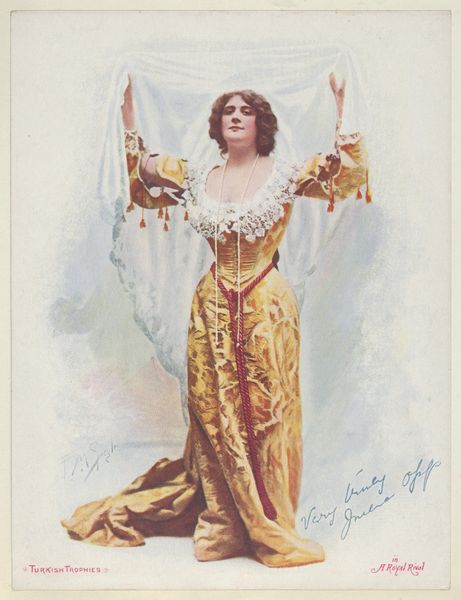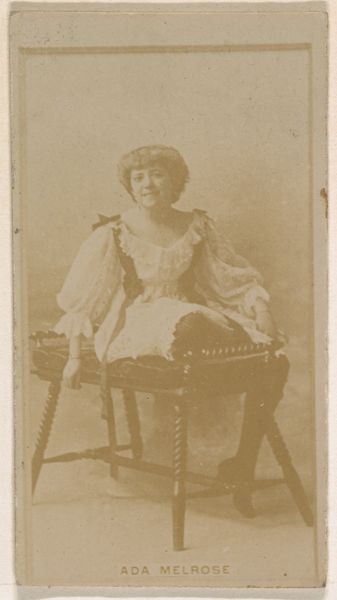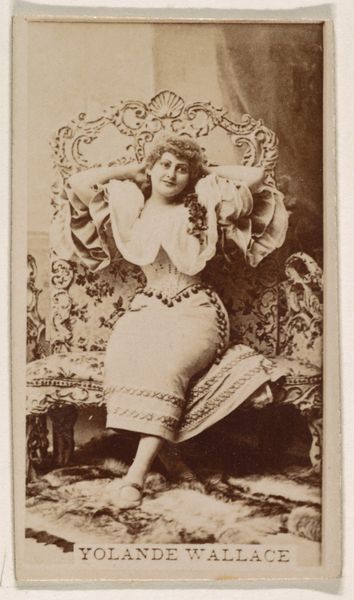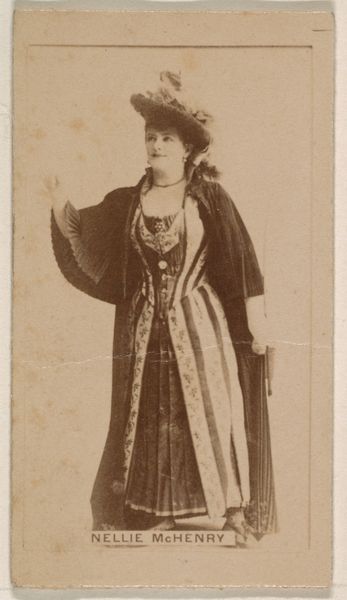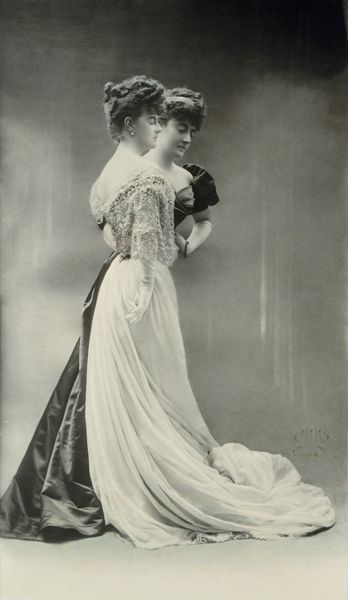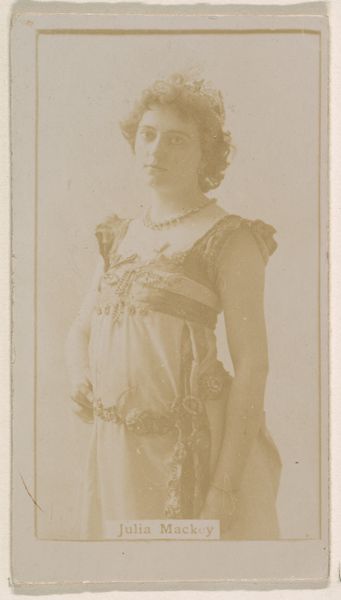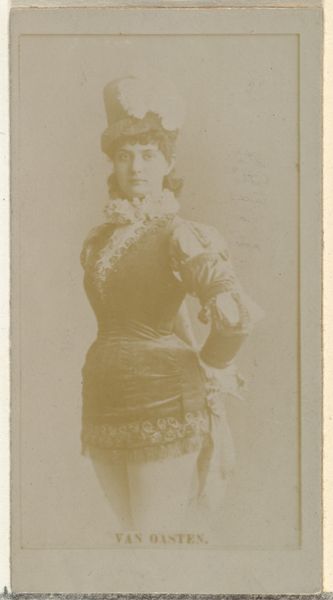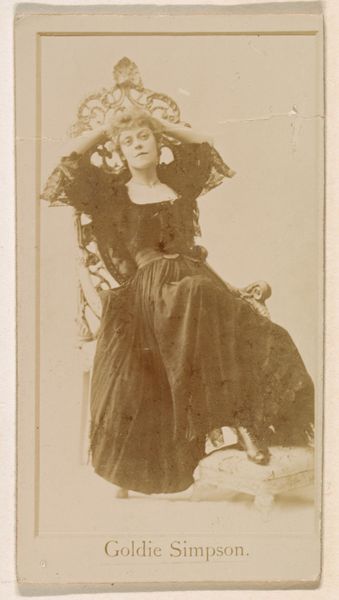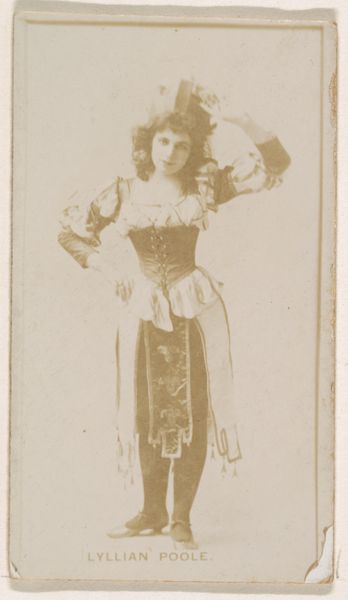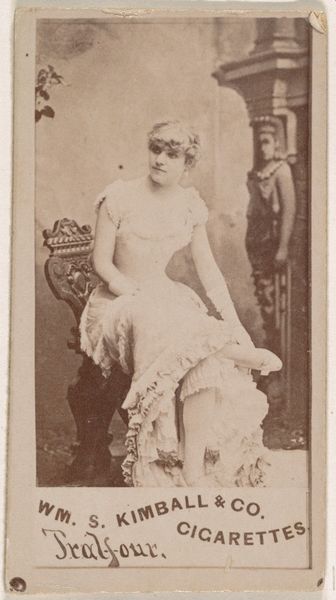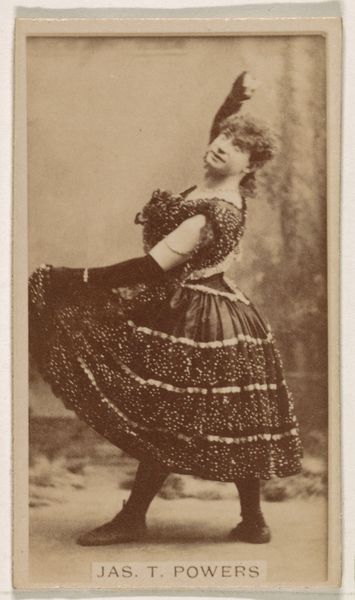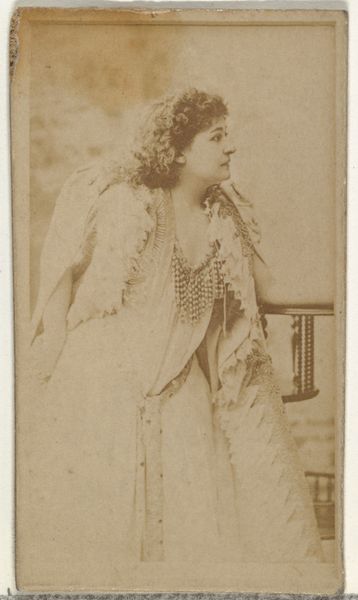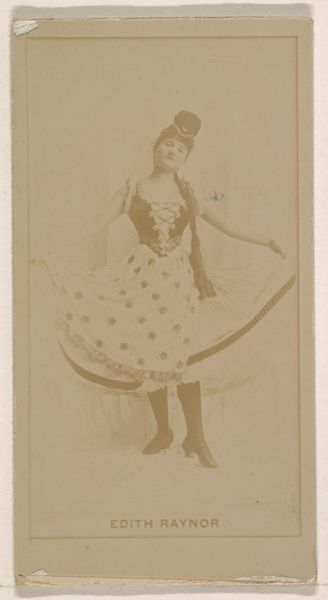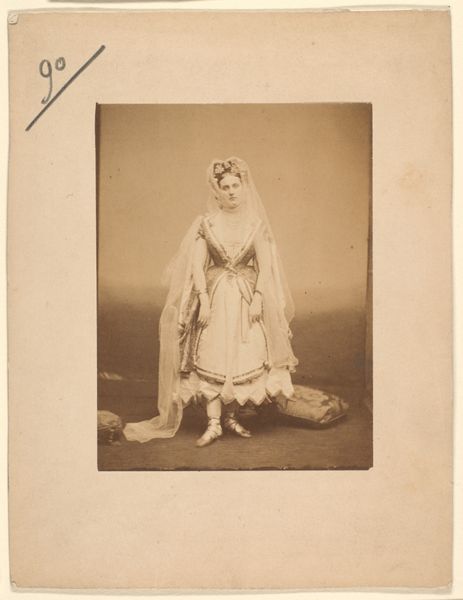
Leslie Carter as Zaza, from the Actresses series (T1), distributed by the American Tobacco Co. to promote Turkish Trophies Cigarettes 1900
0:00
0:00
drawing, print, gouache
#
portrait
#
gouache
#
drawing
#
art-nouveau
# print
#
gouache
Dimensions: Sheet: 8 1/4 x 6 5/16 in. (21 x 16 cm)
Copyright: Public Domain
Curator: Here we have a piece called “Leslie Carter as Zaza”, a promotional print distributed by the American Tobacco Company around 1900, from their “Actresses” series. It depicts the actress in costume. Editor: It has a charming, slightly faded elegance. The color palette is restrained but lively, particularly that vibrant red skirt against the muted background. The texture of the gouache seems almost velvety. Curator: Exactly. What's intriguing here is the commodification of the female image—Leslie Carter's persona used to sell Turkish Trophies cigarettes. Consider the context: The Gilded Age, evolving social norms, and the rise of celebrity culture. Editor: And it is literally made out of mass-produced images – this process firmly grounds “high art” with commerce. The material is paper; think about how it was produced, shipped, and distributed. Labor, exploitation. This piece exposes those power dynamics at play. Curator: Absolutely. We can unpack how women were simultaneously gaining visibility and being exploited through their representation. Carter, as a stage star, embodied both power and vulnerability in a society grappling with changing gender roles. It invites us to reflect on how celebrity and consumer culture shaped identity. Editor: I’m also considering the implied labor embedded within the materiality itself. The gouache pigment had to be sourced and ground; the paper pulp had to be processed from raw materials and turned into a medium for distribution. This simple picture involves many unseen hands. Curator: Right. It’s a multi-layered snapshot into early advertising’s influence, women in entertainment, and the complex relationship between visibility and exploitation, all wrapped up in a simple, delicate image. Editor: This small advertisement offers a large framework for critically addressing production, commodity and consumption in early 20th-century material culture. Thanks for pulling out this image to think through.
Comments
No comments
Be the first to comment and join the conversation on the ultimate creative platform.
